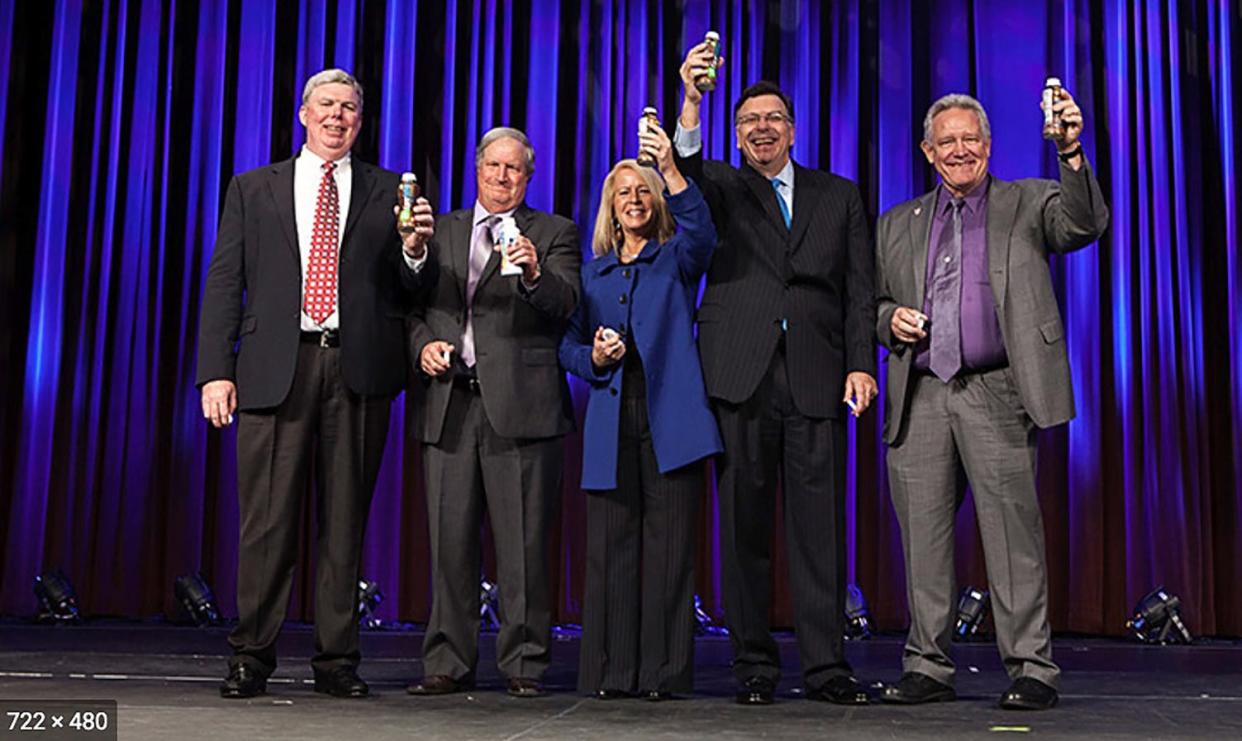Dairy Management CEO received $2.68 million pay package in his last year on job

The former top executive of the marketing group that dairy farmers are required to fund raked in nearly $2.7 million in pay and benefits in 2021, his last year with the nonprofit, according to IRS records.
Thomas Gallagher, Dairy Management Inc.'s ex-CEO, received $612,504 in salary that year and $731,601 in “other reportable compensation” which could include items such as life insurance, a car allowance, retirement benefits, financial planning, and a 2020 annual bonus paid out in 2021, according to forms DMI filed with the Internal Revenue Service last month.
Gallagher, who retired in November 2021, also had $1.3 million in retirement and other deferred compensation, the nonprofit stated in its IRS Form 990 filing.
The 2021 pay package was triple the $887,037 he received in 2020, according to IRS filings.
Dairy Management wrote that a "long-standing" provision in Gallagher's employment contract granted him two years salary and benefits totaling $1.7 million upon termination of his employment. The first of four installments, $425,012, was paid in December 2021, according to the IRS filing.
Dairy Management Inc. is an Illinois-based nonprofit charged with promoting milk, cheese and other products.
It’s funded by a federally mandated agriculture “checkoff” program in which dairy farmers are required to pay in 15 cents per 100 pounds of milk sold. Similar programs covering everything from avocado and Christmas tree farmers to cattle ranchers and pork producers.
The checkoff has been controversial at times, especially in years when dairy farmers were going out of business in droves while Dairy Management executives were collecting six and seven figure pay.
"There's a lot of smoke and fog" around DMI, said Pete Hardin, publisher of The Milkweed, a dairy industry publication based in Brooklyn, Wisconsin.
Gallagher said in September 2021 he would retire after 30 years with DMI.
"My work for America's dairy farmers will always be the highlight of my career," he said at the time.
His replacement, CEO Barbara O’Brien, had total compensation of $804,571 in 2021 including $627,011 in salary and $118,393 in bonuses and incentives, according to the Form 990.
Altogether, the top eight executives at DMI received $6.5 million in pay and compensation last year compared with $4.9 million in 2020 − an increase of nearly 33%.
DMI’s revenue was down 4% in 2021 to $154.4 million, the IRS form showed. Salaries, benefits and other compensation for Dairy Management employees was $33.2 million last year, an increase of about $3 million.
Gallagher's salary topped $1 million three times from 2013 to 2017.
Thomas Vilsack, U.S. Agriculture Secretary under President Barack Obama, and now Agriculture Secretary in President Joe Biden's administration, was paid $800,557 in 2017 when he was DMI's executive vice president.
DMI says its food scientists work with consumer, marketing, and nutrition experts to advance U.S. dairy product sales around the world.
In response to Journal Sentinel questions about 2021, the organization said, "Tom Gallagher's compensation includes his executive retirement package and other items specified in his CEO employment agreement ... Barbara O'Brien's compensation includes bonus payments earned in her roles as DMI president and president of the (affiliated) Innovation Center for U.S. Dairy."
For 2021, DMI said its accomplishments included working with Taco Bell, Pizza Hut, Domino's, McDonald's, and others in the food industry to get more milk and cheese into their products.
DMI was involved in international marketing, since one in every six tankers of milk from U.S. dairy farms heads into the foreign marketplace.
In 2021, DMI said, Domino’s launched a “New Yorker” pizza in Japan that had more than two pounds of cheese. DMI said it provided marketing support to raise awareness among Japanese consumers.
KFC grew U.S. dairy sales in its Latin America and Caribbean markets, according to DMI, by pairing chicken with U.S. produced cheese. Also, Pizza Hut’s Asia Pacific region increased its U.S. cheese sales through the launch of several limited-time offers such as a pizza with string cheese in the crust.
DMI said checkoff-led efforts helped finalize agreements with Nestle and Starbucks to support research, on-farm pilots, and efforts to increase voluntary adoption of environmental practices on farms through the U.S. Dairy Net Zero Initiative.
Also announced was the Greener Cattle Initiative, a research program focused on methane gas pollution from cows.
The U.S. dairy industry is ending 2022 on a mostly positive note, including what might be a record year for exports.
“It may be hard to set another record in 2023, but there is a possibility of increased exports,” Robert Cropp, professor emeritus at University of Wisconsin-Madison Cooperative Extension professor said in a recent column.
The price farmers received for their milk was higher this year, although much of the gain was offset by higher costs for fuel, fertilizer, and other essentials.
As of Dec. 1, Wisconsin had 6,140 dairy herds, down from 6,572 a year earlier and 11,542 just a decade ago. Nine counties reported fewer than 10 herds.
Even with decades of farm losses, milk production has been rising through the remaining bigger farms.
But the loss of thousands of small farms has taken a heavy toll on Wisconsin’s rural economy.
Each dollar of net farm income results in an additional 60 cents of economic activity as farmers spend money in their local communities, according to University of Wisconsin research.
That translates to millions of dollars for the rural economy and urban centers as well since most of the items farmers buy come from other places.
When small farms are lost, so is much of that income.
This article originally appeared on Milwaukee Journal Sentinel: Dairy Management CEO received $2.68 million pay package

